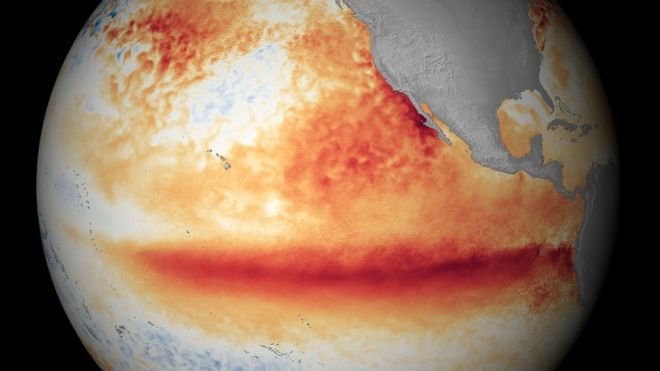Little-Acorn
Gold Member
Here in Sandy Eggo, this year every time some rain is in the forecast, the newsreaders are in a tizzy. "This is an El Nino driven storm, OMG, batten down the hatches, get read for disaster! El Nino is here!!!" - repeated over and over ad nauseum.
Apparently someone found that ocean temperatures were high than usual this summer. This, they say, is called "El Nino", and can cause more severe storms. Or so they tell us. So now they are screaming "El Nino!" every time it gets cloudy.
Well, where are the severe storms?
Have any of these people screaming that El Nino is driving all the storms this year, checked the actual rainfall?
Climate Los Angeles - California and Weather averages Los Angeles - Weather history august 2015
Rainy season starts in August around here. The rainy season isn't over yet, of course. But we can look at what we've gotten so far.
In San Diego, normal rainfall Aug-Feb is 7.99". So far from Aug 2015 thru Feb 2016, we've had 6.90".
For Los Angeles, the numbers are 15.29" normally, Aug-Feb. So far this season, they've had 6.04" from Aug to Feb.
We've had the same sporadic flooding, mudslides etc. that always happen ever year, with or without El Nino.
This is what El Nino produces? The hysterical newsreaders say so - this year's southern California storms are "El Nino driven!"
Sounds to me like El Nino doesn't do squat. Normal weather (or even a little drier) is what it gets us.
Are these the same people who scream Manmade Global Warming is making our weather worse... without a shred of proof that man had anything to do with it?
Apparently someone found that ocean temperatures were high than usual this summer. This, they say, is called "El Nino", and can cause more severe storms. Or so they tell us. So now they are screaming "El Nino!" every time it gets cloudy.
Well, where are the severe storms?
Have any of these people screaming that El Nino is driving all the storms this year, checked the actual rainfall?
Climate Los Angeles - California and Weather averages Los Angeles - Weather history august 2015
Rainy season starts in August around here. The rainy season isn't over yet, of course. But we can look at what we've gotten so far.
In San Diego, normal rainfall Aug-Feb is 7.99". So far from Aug 2015 thru Feb 2016, we've had 6.90".
For Los Angeles, the numbers are 15.29" normally, Aug-Feb. So far this season, they've had 6.04" from Aug to Feb.
We've had the same sporadic flooding, mudslides etc. that always happen ever year, with or without El Nino.
This is what El Nino produces? The hysterical newsreaders say so - this year's southern California storms are "El Nino driven!"
Sounds to me like El Nino doesn't do squat. Normal weather (or even a little drier) is what it gets us.
Are these the same people who scream Manmade Global Warming is making our weather worse... without a shred of proof that man had anything to do with it?





